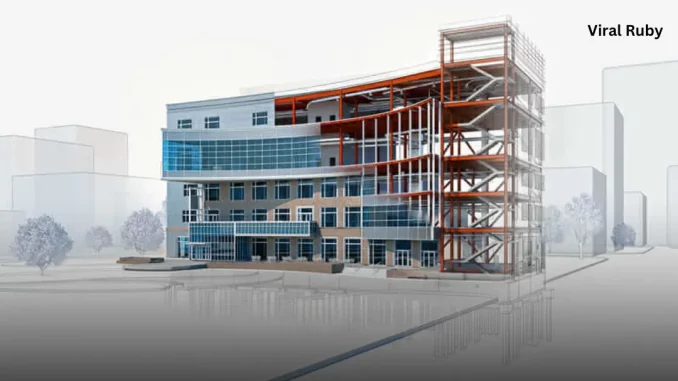
What is Building Information Modelling and How Does it Work?
BIM is a tool that can help construction companies to save time and money on their projects. It is an efficient way to build a model of a building and use it for planning, estimating, scheduling, and maintenance.
The information in a building model is an intelligent representation of the physical and functional characteristics of a space. This digital representation provides visibility and collaboration between designers, contractors, and other stakeholders throughout the lifecycle of a project.
What is building information modeling?
Building information modeling (BIM) is the process of using software to create a 3D model of a building. It’s a great tool that can help architects, engineers, and contractors collaborate together to design a building.
BIM allows everyone on the project team to work together from a single model, and all changes made to the model are automatically reflected in all other views of the project. This can prevent costly errors and delays during construction.
Let Me Show: www forbes com – Forbes Online Business Magazine
The BIM model also provides a means of sharing plans and designs with contractors and tradespeople to ensure that everything is done correctly. This saves time, money, and effort, and it’s one of the biggest benefits of using BIM.
As a result, BIM has become a popular construction trend. It has many advantages and can make projects more efficient, but it comes with some challenges.
It’s important to understand how the process works and what it can do for your business. It can help you avoid common pitfalls, such as construction schedule setbacks and change orders, while it can also increase the quality of your buildings.
BIM is a workflow process that involves a series of models that are used throughout the life cycle of a building. It helps to streamline the design and construction process, resulting in better buildings that are easier to maintain. It can also reduce costs and environmental impact.
What is Building Information Modelling of a building?
BIM is an acronym for Building Information Modelling, a technology that simulates a construction project in a virtual environment using 3D modeling. This model contains precise geometry and relevant data that will be used throughout the design, fabrication, and construction of the building.
One of the many advantages of this technology is that it enables team members from all areas of the project to collaborate in an efficient and organized manner. It also reduces errors and improves job safety.
The Building Information Modelling industry is a growing one and there are more than a few companies jumping on the bandwagon. These include Autodesk, Trimble and others that offer software for architects, engineers and contractors.
It is the brainchild of a handful of industry leaders who recognize that the architecture, engineering and construction (AEC) industries are looking for ways to reduce costs and time to market. As a result, a number of government agencies have mandated the use of BIM in order to promote efficiency and collaboration.
This tech is not only useful for designing buildings but also in helping to understand their existing condition and how they will perform over their lifetime. It is also the best way to get a clear picture of what is likely to go wrong with construction projects. It is a good idea to start early so that you can mitigate any problems before they become big problems.
What is Building Information Modeling data?
Building information modeling (BIM) is a process that utilizes 3D models to manage and share project data. It’s a way to better understand and collaborate on projects.
It can help with everything from the design of buildings to a road or bridge. It has many benefits, including reducing errors during the design and construction phases.
Building Information Modelling is an essential component of any construction company. It allows architects, engineers and contractors to plan and document the various aspects of a project more efficiently.
When done right, it can help to significantly reduce the cost of a project by minimizing time spent on rework and delays caused by miscommunication between people. It can also improve collaboration by enabling everyone involved in the design and construction of a project to view all relevant documentation at once.
This helps to speed up the process and ensure that all parties are on the same page from the earliest design phase. It’s also a great tool for documenting the life cycle of a project, which can be used to optimize maintenance and operations post-construction.
It can also be used to create a 3D model of a building, which can prove useful for assessing whether the structure will hold up over its lifetime or not. It can even serve as a blueprint for similar future projects. It is also a great tool for enhancing job safety during construction, as it can aid with tracking progress and identifying problems early on before they become bigger issues later on.
What is the difference between BIM and CAD?
Computer-aided design (CAD) software has been around for a long time and is still used by most designers and architects to create accurate floor plans and models. However, the architectural industry has been introducing new concepts on a regular basis that are not just focused on CAD.
BIM is one of those concepts, and it’s a good thing as it allows architects to design buildings and facilities in 3D. This gives the designers a more realistic picture of how the building will look. It also helps them create more efficient designs and better quality construction.
In a similar way, CAD is used by engineers to design mechanical and electrical assemblies. It’s important for this because it can help to save time and money.
The biggest difference between CAD and BIM is that CAD only works in two dimensions (length, breadth, and width). On the other hand, BIM goes beyond that by working in five dimensions: time, cost, space, sustainability, and performance.
This is a huge step forward in construction and makes it much easier for all project teams to communicate and work together in one database. It also provides more accurate estimates of what the final structure will look like and how it will cost.
Building Information Modelling is a process that can be used in all areas of the construction industry and has the potential to change the way we design and build buildings. It can make the design and construction process more efficient, which means more money saved and a faster return on investment.
Benefits of Building Information Modeling BIM So
The benefits of building information modeling BIM So include increased collaboration, faster project completion and a more efficient workflow. The software creates a “single source of truth” system, which allows all parties involved in a project to view and collaborate on the information they need.
Design teams can quickly iterate a prototype solution to avoid costly renovations during construction. They can also experiment with new materials and push the limits of design without risking physical construction.
As building designs evolve, architects can make informed decisions based on real-world data analytics. For example, they can test the flow of natural light into a space and determine which window and door types are most effective for their clients.
Another benefit of Building Information Modelling is that it can help designers build structures that are more energy efficient and sustainable. It can also make it easy for maintenance and energy management teams to locate equipment and monitor its performance.
In addition, it can be used to track energy consumption and cost throughout the life of a structure. It can also enable building owners to more accurately forecast their costs for future operations.
A building information model can demonstrate a complete life cycle of a building (Bazjanac 2006). This includes geospatial relationships, geographic information, quantities and properties of building components and a range of collaborative processes.
Building information modeling in civil engineering
BIM is a system of collaborative modeling that integrates people, technology and processes to improve outcomes in building and construction. It streamlines time, costs and efficiency in building projects like skyscrapers, hospitals, office buildings and residential homes.
Building Information Modelling models are built in a database-first model that can be accessed and edited by designers, construction teams, engineers and architects all at the same time. This way, team members can easily share information, edit files and ensure consistency across the entire design and build process.
It’s also a great tool for civil engineers to use for estimating costs early in the planning phase. By using BIM tools, civil engineers can calculate the future costs of materials and infrastructure with much greater accuracy, enabling them to optimise expenses and reduce the overall cost of their projects.
Additionally, it can help them estimate project schedules and avoid construction schedule setbacks due to changes or new site conditions. This can drastically increase the speed of a project and reduce its risk.
Finally, it can help civil engineers collaborate with their stakeholders to make informed decisions about the project. This can increase the quality of a build, reduce costs and improve the end-user experience.
The use of Building Information Modelling has become increasingly common in the civil engineering industry, with a majority of engineers and contractors reporting that they are more efficient with this type of technology. This is primarily due to the benefits of visualization and collaboration that BIM offers. This increased visibility and collaboration allows for better project outcomes and higher productivity from all team members.

Leave a Reply